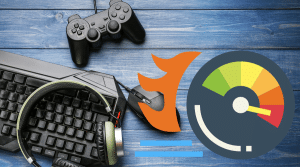The short answer is: no, OpenAI is not currently free to access and use in full. However, they do offer limited free trials and experimentation options. And in the future, there are possibilities that OpenAI may expand free access in certain ways while continuing to charge for advanced capabilities. In this guide, we’ll explore OpenAI’s background, current pricing approach, future potential, and alternatives – to help you understand where things stand today and where they may be headed.
Introducing OpenAI
First, let‘s provide some background. OpenAI is an artificial intelligence research company started in 2015, co-founded by luminaries like Elon Musk, Sam Altman, and others. Their stated mission is an inspiring one:
“OpenAI‘s mission is to ensure that artificial general intelligence benefits all of humanity.”
This means they aim to develop AI that is safe, beneficial, and aligned with human values. To work towards this vision, OpenAI has released a series of increasingly powerful AI models:
- GPT-3 – A large language model capable of generating human-like text and code
- DALL-E – A system that creates images from text descriptions
- Codex – AI that translates natural language to code
- ChatGPT – A conversational agent that can answer questions and generate content
The capabilities of these models seem to expand almost daily. Here are some of the incredible things ChatGPT can do:
- Hold natural conversations and answer follow-up questions logically
- Generate original essays, articles, poems, and coding on demand
- Explain complex topics clearly and concisely
- Translate text between languages
- Summarize long passages pithily
- Create study guides, trivia quizzes, and more
This rapid progress shows the acceleration of AI – which also comes with risks and challenges. That‘s why OpenAI‘s focus on ethics and safety is so important.
As excitement grows around their inventions, many wonder – will OpenAI‘s powerful models remain gated behind paid access forever? Or will they gradually open up AI for the benefit of all? Let‘s explore this topic.
Current OpenAI Access – Free Trials With Limits
Currently, full access to OpenAI‘s latest models requires paid API subscriptions. However, they do offer limited free trials and experimentation options, including:
-
OpenAI Playground – This sandbox lets developers try Davinci, Curie and other models via a web UI. New users get $18 of free credits valid for 4 months.
-
Limited model access – Some of OpenAI‘s earlier models like GPT-2 are available as open source downloads. But recent releases require API keys.
-
Intermittent free trials – For major releases like the GPT-3 API, OpenAI has offered time-limited free trials with credits to spark experimentation.
So in summary – yes, you can access parts of OpenAI for free on a limited basis. But full-scale production usage requires paid plans based on factors like:
- Number of tokens (amount of text) processed
- Frequency of API calls
- Features of the AI model
Next, let‘s examine the pricing and plans in more detail.
OpenAI Pricing Overview
OpenAI uses a pay-as-you-go pricing model for API access. Here are the key details:
-
You pay per token – Each token is 4 characters. So a 1000 token request is about 750 words.
-
More advanced AI models like Davinci cost more per token than basic ones like Curie.
-
The more tokens you process via the API, the higher your bill.
For example, here is the approximate pricing to generate 1000 tokens of text with different models:
| Model | Price (1000 tokens) |
|---|---|
| Davinci | $0.02 |
| Curie | $0.002 |
| Babbage | $0.0005 |
| Ada | $0.0004 |
So generating a long piece of content with Davinci would quickly become expensive – say $6 for a 3000 token essay.
For high-volume use cases like chatbots, the costs can add up:
| Use Case | # Tokens | Cost (Davinci) |
|---|---|---|
| Chatbot (250 convos @ 1000 tokens) | 250,000 | $5,000 |
| Content site (100 articles @ 5000 tokens) | 500,000 | $10,000 |
As you can see, while OpenAI does offer free trials – accessing their models at scale for business purposes requires a paid plan.
The Benefits (and Risks) of OpenAI‘s AI Models
Given the pricing involved, you may wonder – are OpenAI‘s systems worth the investment? In many cases, the answer seems to be yes. Applications built with models like GPT-3 and ChatGPT can provide tremendous value:
- Customer service – Chatbots that can handle complex queries and conversations naturally
- Market research – Instant survey creation and tabulation
- Content creation – Generate articles, stories, and text for blogs on demand
- Code generation – Fast prototyping by producing code from descriptions
- Education – Personalized learning through AI tutors and generators
However, along with the benefits come potential risks if the technology is not properly governed. OpenAI focuses heavily on AI safety research to address problems like:
- Bias – When models amplify unfair biases from training data
- Misinformation – AI could be used to generate harmful or false content
- Job disruption – Automating tasks currently done by people
That‘s why OpenAI takes care to control access to its models via API keys. However, the company likely faces pressure to increase access over time and achieve its mission of benefitting all humanity.
So what possibilities exist for OpenAI to expand free access while keeping AI safe and beneficial?
The Future Possibilities for OpenAI Access
Given that OpenAI is still young (founded in 2015), its approach to pricing and accessibility may evolve considerably. Here are some potential directions that could enable wider access while funding critical research:
-
Tiered access – Free or low-cost access to basic versions of models, with premium capabilities gated behind subscriptions. This allows more people to benefit from AI while funding the cutting edge.
-
Grants and sponsorships – Providing free credits, subsidized access, or discounted plans to researchers, students, non-profits, and other beneficiaries working on positive applications.
-
Open source models – After a period of exclusivity to recoup costs, some models could be open sourced for the community to build on freely.
-
Lower cost plans – If research and hosting expenses come down with scale, the most advanced models may still require payment but at much lower price points.
-
Hybrid models – Parts of capability sets offered for free with premium enhancements paid. For example basic chat could be free while human-like conversations are paid.
-
Licensing and partnerships – OpenAI could work with third parties to integrate capabilities into existing products and platforms, expanding reach while earning revenue.
The key is finding the right balance – generating enough revenue to fund ongoing advances in AI safety, while extending access for positive benefit.
It‘s unlikely OpenAI will offer unfettered access to their most advanced models. But with tiered plans, sponsorships, open sourcing, falling costs, hybrid models and partnerships – it does seem plausible that increased (though not completely free) access could happen over time.
Alternatives for Free AI Exploration Today
Given the current paid access for full-fledged OpenAI tools, are there any free options available today? Here are some alternatives to explore:
- Anthropic – This AI safety startup offers free access to their Claude chatbot with limited availability.
- Cohere – Their large language models have a free tier for developers with caps on usage.
- Hugging Face – Home to AI community models like GPT-2 and BlenderBot that anyone can access.
- AI21 Studio – Offers free generation and summarization tools with limits.
For those new to AI, these free options allow you to get started, experiment, and learn the basics without needing to pay upfront. Once ready to build more advanced applications, OpenAI‘s powerful models are available via standard pricing plans.
In Closing: The Road Ahead
It‘s an exciting time in AI development, and OpenAI stands at the forefront of many breakthroughs. While full access to capabilities comes at a cost today, we may see OpenAI continue to expand free trials and discounted access over time – enabling more inclusive innovation while sustaining their vital research.
appropriately governing AI for the benefit of humanity. If done responsibly, AI could help unlock solutions to some of our greatest challenges. With OpenAI‘s continuing evolution, it‘s likely the future holds even greater possibilities than we can imagine today.








